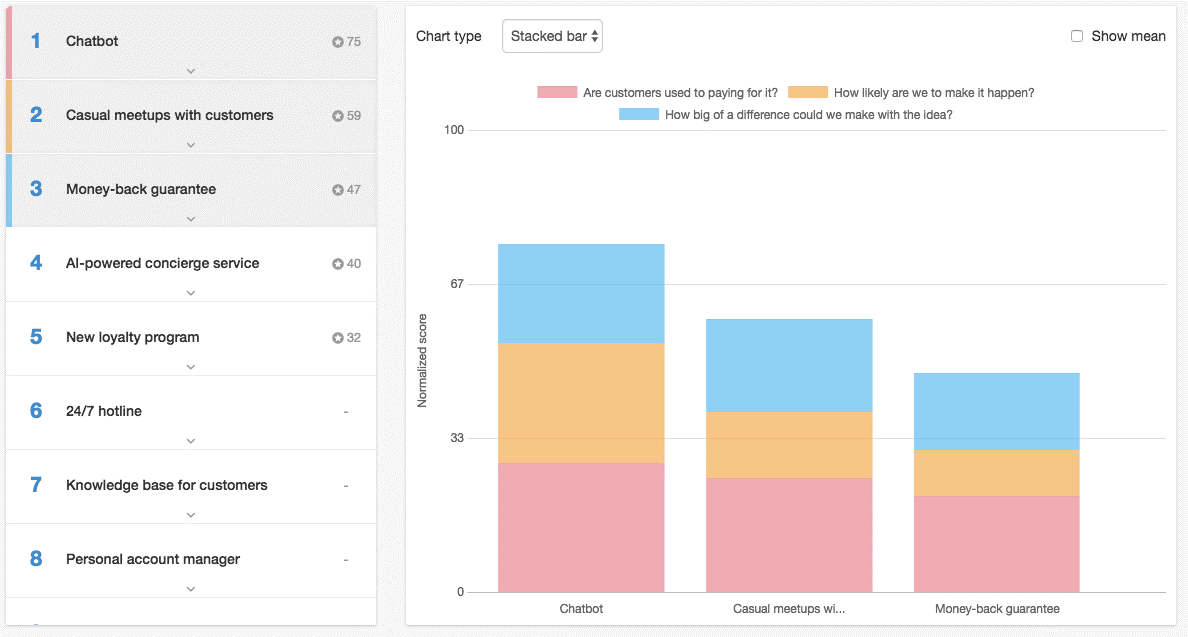5 Simple Steps for Finding the Right Business Idea
By: Jesse Nieminen

When I was first considering to become an entrepreneur some six years ago, I had lots of different business ideas.
However, none of them just felt right and I wasn’t sure if they were good enough to warrant me making the leap.
And I’m not alone. Most of the would-be entrepreneurs that I meet have heard that 11 out of 12 startups fail and they want to make sure that the idea they pick is the right one before they make the plunge and become entrepreneurs.
Just like with any other project, getting started is usually the psychologically most demanding part of the journey, but sticking with the idea long enough to make it work is what really counts.
Thus, while the exact business idea matters less than most people think, picking an idea that you’re willing to stand behind of for years, one way or the other, is actually very important.
What’s more, you need to have confidence in your idea to be able to convince others to trust you, which you’ll need to do over and over again on your entrepreneurial journey.
In the last five years that we’ve ran Viima, we’ve helped a good number of organizations better manage their ideas and turn them into innovations, which has taught me quite a bit about working with ideas.
Read more on best business ideas
I’ll now share a simple five-step process for finding an innovative business idea that you can use to figure out the right idea for your business-to-be.
1. Find the Sweet Spot
The first part of the process is to realize that all of the best ideas have a few things in common:
- The founder/organization is good at whatever the idea is
- The founder/organization is passionate about the idea
- There are people willing to pay for the idea
Once you overlap these three areas, you’ll find the so called “Sweet Spot.”
Now, this doesn’t mean that you can’t build a business if you’re not passionate about or great at an idea, it’s just going to be much, much harder to do so and to stay in the game for the long run.
So, you should ideally look for areas where your passion and skills overlap.
The same rules apply for both solo entrepreneurs, co-founding teams, as well as for incumbent organizations that are looking for new business ideas. In these cases you simply need to look at things from the point-of-view of the team or the organization you’re representing, not just yourself.
But for simplicity’s sake, we’ll refer to “you” as a solo entrepreneur in this article.
For example, I have a background in software engineering, I love creating new software products and services, and I’ve always been very interested in innovation and new technology in general, as well as organizational design and performance. Thus, working on an innovation management software service is quite a natural fit for me.
Click here to read more on organizational design
Now the third bullet is the most important one. To have a real business, you ultimately need to find people who are willing to pay for whatever it is that you’re doing, but we’ll get to that in more detail later on.
To get started, list 5-10 things that you’re good at and 5-10 things that you’re passionate about.
Don’t be too picky at this point, just list whatever comes into mind and then move on to the next phase.
2. Generate business ideas
Now that you have those areas at hand, you’re ready to start generating ideas, which is actually quite straightforward at this point: you combine all of the things you just wrote into pairs.
For example, let’s say that I wrote down the following:
| Passionate about | Good at |
| Gardening | Software engineering |
| Gym | Marketing |
| Innovation | Cooking |
By combining each of these with all of the ones from the other column, I get a total of nine potential business ideas, such as “innovation software,” “gardening software,” and “gym cooking.”
A few of these might not make much sense and some are guaranteed to be quite funny, but it’s still a great way to generate lots of relevant ideas quickly.
You shouldn’t also take these ideas too literally. For example “Gym cooking” doesn’t have to mean that you would have to set up a mini-restaurant at the local gym.
It could also mean a business aimed at helping avid gym goers better reach their goals (typically either losing weight or building muscle) by helping them with their nutrition.
This could be achieved, for example, by selling tasty, healthy and affordable pre-cooked meals optimized for the nutritional goals of the individual in question, or by creating an online course that teaches the customer ways to create those meals themselves with as little time spent cooking as possible, perhaps bundled together with a solid library of example recipes.
3. Prioritize and choose the most potential idea
If you’ve followed the previous steps, you should now have at least 25 potential business ideas.
You can’t obviously pursue all of them, so the next step is to evaluate and prioritize your ideas to figure out which of them is the most potential for you to pursue at this time.
To do this, you simply rate the ideas based on a few different criteria and then compare them to one another.
I usually recommend most people to keep things simple and focus on three key questions:
- Are people used to paying for this?
- How likely are you able to make it happen?
- Does it solve an unsolved challenge or does it improve performance dramatically in an area that has been stagnant for long?
Used to paying for
The first step is to look for things that people are used to paying for. Let’s take a couple examples from the previous table.
A quick search for “gardening software” reveals that there are quite a few alternatives out there, many of which are free and some of which are paid for, usually at a price of around $10. The rest seem to be designed primarily for professional landscape planners. So, on the surface, it would appear that individual homeowners tending to their gardens aren’t used to paying much for software.
On the other hand, “innovation software” is another story. Companies are investing tons of money on coming up with innovations and if there’s software out there that can help them do the job better, they are most certainly willing to use at least a small sliver of that for something similar.
The downside with obvious choices, such as “innovation software,” is that there’s also going be lots of competition and you need to figure out how to beat them, which we’ll get back to later on.
Ability to execute
Next, how likely are you to be able to make that happen? The better you are at what you’re doing, especially when compared to others, the more likely you are to make the idea happen and the better suited the idea is for you.
If you’re planning to be a solo entrepreneur, you might not want to pick a business idea, such as B2B software, that usually requires a team with a diverse set of skills, such as sales, marketing and engineering.
On the other hand, if you have a solid founding team with all of these skills, it might be a great fit.
The challenge or the opportunity
Finally, we should look at the challenges that the idea is trying to solve and the status quo of what the current performance in that area is. This is the part that actually separates innovative business ideas from the rest.
If you’re simply looking to solve a problem that has already been solved and do it the same as everyone else for a slightly lower price, or by doing it slightly better, you’re not really creating anything innovative.
There’s nothing wrong with that in itself. Creating a business that is able to simply be a bit better than the competition is obviously a good thing.
However, in that case, you might want to prepare for a tough battle with the incumbents.
Innovative business ideas, on the other hand, do usually provide a more sustainable source of competitive advantage, and can sometimes also be easier to market and sell, provided that you have a clear value promise.
The key is to look for problems and challenges that are completely unsolved, such as stopping climate change, or that are solved but where performance has stagnated for a long period of time.
The bigger the challenge or the opportunity, the better.
For most people and organizations, it might be easier to find example of the latter where you actually have a realistic chance of making the idea happen.
For example, a great example is the oil spill clean-up industry.
Prior to the Deepwater Horizon incident, the industry had been stagnant for a long time, but thanks to the attention gained by the spill and the X-Prize awarded for progress in the area, multiple innovations were quickly created to dramatically speed up the cleanup efficiency, even by people with no prior industry experience whatsoever.
Look for incentive traps
To find opportunities for dramatically improving performance, you should look for areas where technological progress is being made (or could be made), or where there are clear incentive traps in play.
If we use the aforementioned example of oil spill clean-up, the industry clearly had strong incentive traps against making progress.
The oil companies already fulfilled the regulatory requirements mandated by the public sector and also had appropriate insurance policies in place for covering the costs of incidents, such as oil spills, which are very costly but at the same time highly unlikely.
As the incidents are quite rare, there aren’t really many “oil spill cleanup professionals,” it’s mostly the local fisherman who are hired to do the work and they work on an hourly basis. It’s thus not in their advantage to clean the spill as quickly as possible, rather to work on it for as long as possible.
To further solidify the situation, the public sector felt that since it had already laid some regulation in the area and there hadn’t been many major incidents in the area recently, they didn’t see the need to use taxpayer money and their own time, that could be used for progressing other more pressing agendas, to drive stricter regulation in the area.
All of these combined made this a very exciting opportunity for those aiming to change status quo.
Ranking the ideas
To conclude, once you’ve provided your ideas with numeric ratings, they can just be on a relative scale of 1-10 to make things easier for you, you can add up the three criteria to calculate total “scores” for your ideas and then order them based on that score.
It’s easy to do this by simply using your favorite spreadsheet software. However, if you’re a larger organization with the need for a more robust, systematic and transparent approach, you might want to consider a dedicated idea management software, such as Viima, for running your idea management process.
Regardless of the tool you use, the idea with the biggest total score can now be considered to be your best bet.
4. Create hypotheses for obstacles and your key assumptions
Now that you have your top idea, it’s time to take a closer look and to see what the biggest potential obstacles for your idea might be, as well as to clarify the assumptions you made when rating the idea.
As all of the ratings are purely assumptions at this point, you still need to make sure that people really are willing to pay for the idea, that you really are capable of executing it, and that it really is a real opportunity that you’re looking to tackle.
In other words, you need to formalize your thoughts into a few different hypotheses that you can test to validate the feasibility of your business idea, as well as your plan on executing that business idea.
At this point, it’s vital that you’re as objective and critical of your idea as possible and that you focus on the key hypotheses that can either make or break the idea.
If you’re in a field that is highly competitive, these hypotheses or assumptions should also test whether your unique value proposition is actually something that people value.
For example, if your business idea is to sell gardening software to homeowners, you should at the very least figure out:
- How much homeowners would be willing to pay for your unique value proposition and how big the potential market is
- How you would reach those homeowners (inbound marketing, outbound sales, Facebook ads) and how much it would cost for you to acquire one customer
- How much it would cost for you to develop the software
- Does the method, by which your app would create value, actually work
Once you’ve ran tests to collect data to figure out the answers to these questions, you can start making rough calculations to see if your business idea could work, and what it would take to do this.
5. Validate the core assumptions of your theory
Now that you’re ready to start conducting the research and validating your core assumptions, there are a few things you should keep in mind.
Conducting the research
When conducting the research, you should ideally do it with a prototype or mock of your value proposition, instead of just asking people directly or via surveys. This minimizes response bias and also helps you create a backlog of solid prospects to sell to once your service is ready.
What’s more creating a live app prototype is actually pretty quick and easy to do these days with tools like Origami being freely available.
If we get back to our gardening software example, let’s imagine that you’ve created a simple interactive app prototype that you can show people from your phone.
You’ve then shown that to a solid number of homeowners and tried to sell it to them with a pre-order discount (at a few different price points).
In addition, you’ve also created a landing page with a demo video of the app where the visitors could also pre-order the product at those pre-determined price points and generated some traffic to this landing page with Facebook ads and some Google AdWords.
Together these approaches give you solid data for judging the viability of your idea and haven’t really cost you that much time and money.
Analyzing the results
Let’s suppose that after doing your research, you’ve come to the following conclusions:
- Based on your interviews, 1 in 20 homeowners would be willing to pay for the software and on average they were willing to pay 5$/month for the service.
- From AdWords, you’ve been able to get 10 pre-orders after using $1000 and from Facebook, you’ve been able to get 18 pre-orders with the same $1000 budget.
- You’ve interviewed a couple of CTO candidates and come into the conclusion that it would likely take 3 months and $25000 to create the first version of the product.
The data would suggest that you could charge homeowners $60/year for the product and you also know that it would likely cost you somewhere between $55 and $100 to acquire a customer via paid advertising. While these numbers aren’t exactly great, they would suggest that if you can get to the bottom of that range later on, you could have a viable business here at some point.
However, since the revenue from a single customer is pretty low, using more expensive customer acquisition methods, such as outbound sales, will likely never be feasible.
Of course, this also assumes that the software actually creates value and is thus able to retain the acquired customers.
If the core value in our app would come from automated smart notifications that would tell you when to plant your flowers and other crops, as well as to when and how much to water them based on the historical weather data and the plant in question, you should be able to prove that the method actually works even before you actually start coding the app.
So, what you can do is to try this approach yourself on your own and on your neighbor’s lawn without the app. Just use the same data and follow the same suggestions that the app would give if it existed.
This approach saves you tons of time and money and will allow you to get paying customers faster.
But what about my unique innovation?
If your idea is highly technical or innovative in nature, things might not always be as straightforward. It would likely be harder to prototype these approaches and also to find relevant potential buyers, but there’s still always a way to test demand for the value proposition.
Let’s say that you’re planning to send people on a tourist trip to the Moon and you have a plan for cutting the price to 10 million dollars per ticket. You can simply create a landing page to test demand for a moon trip at that price point. Simply state your goal to do this by 2025 and ask for people to do a non-binding reservation to reserve their ticket on the landing page.
The bigger the challenge or the opportunity, the higher the required investment and the involved risk are likely to be, which makes it even more important for you to do your homework properly by validating the idea.
By doing this, you will learn incredibly valuable lessons regarding the business that you’re looking to build.
In addition, taking shortcuts here is highly likely to come back and haunt you later on when you find out that you’ve spent millions building something that no one wants.
If you’re serious about the business idea, you’d be hard pressed to find better ways to invest that same amount of time and money, even if it takes a bit more effort to research and validate the idea.
What next?
Once you’ve ran the tests, you should have a pretty good idea of whether the idea is worth pursuing.
If you’ve ran into one or two clear question marks regarding the idea, you could try to take a step back and iron out these kinks by working on the business concept.
Depending on the challenge in question, you could try refining the product, the technologies, the business model or the customer acquisition channels, and then re-conducting the same tests as before to see if these changes make a difference.
If, however, there are just too many, or too big, obstacles in the way of you being able to make a solid business out of the idea, it might not be the right time for you to do work on it.
If this is the case, you can simply go back to step number three and pick the idea that you rated as the second most potential and start over.
Best of luck with your new business!
8090 Views

















